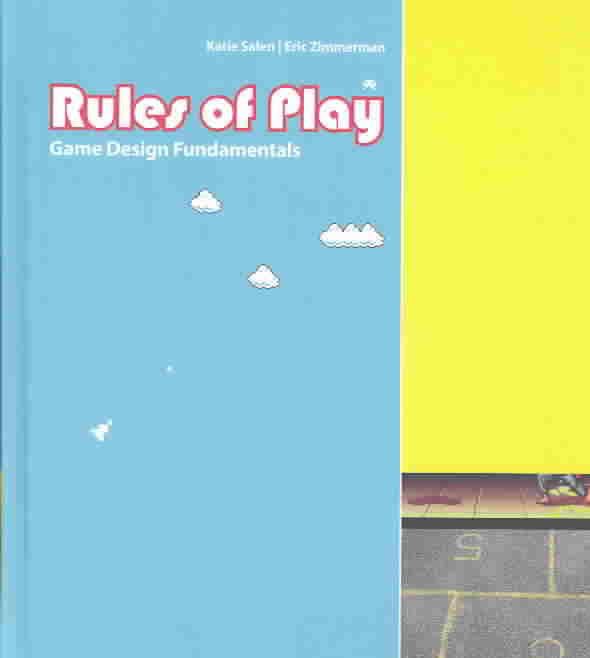Rules of Play: Game Design Fundamentals is a book on game design by Katie Salen and Eric Zimmerman, published by MIT Press. Will Wright, a game designer for Sim City, when describing this book, said "This is the most impressive book on game design I've ever seen. Broad in scope yet rich in detail, Rules of Play sets a new standard for game analysis".
Rules of Play expresses the perspective that a theoretical framework for interactive design has not yet been established. This is not the first time this has been recognized or explored, but is explored in a fresh way in great detail. The book is divided into four units, first introducing core concepts, then expanding on these with a detailed discussion of rules, play and culture.
Meaningful play - The authors introduce the concept of meaningful play as the goal of successful game design, providing their own definitions.Design - The authors discuss definitions of design, and introduce their own. They go on to discuss semiotics, the study of meaning, describing Charles Sanders Peirce's semiotic elements.Systems - The authors introduce four elements all systems share, as defined by Stephen Littlejohn in his textbook Theories of Human Communication, and go on to identify each of these elements in the game of chess, when framed as a formal (mathematical), experiential (social), or cultural (representational) system.Interactivity - The authors connect interactivity with the concepts introduced thus far, and identify various modes of interactivity, citing examples of cognitive, functional, explicit, and "beyond-the-object" interactivity.Defining Games - The authors discuss the relationship between play and games, highlight existing definitions of a game, and provide their own intentionally narrow definitions of games and game design.Defining Digital Games - The authors insist that "the underlying properties of games and the core challenges of game design hold true regardless of the medium in which a game manifests," but they do identify four traits that are particularly strong in digital games: Immediate but narrow interactivity, the manipulation of information, automated complex systems, and networked communication.The Magic Circle - The authors borrow the term magic circle from the book Homo Ludens by Johan Huizinga, using it to describe the space within which a game takes place. They explain how players enter into the magic circle by adopting a lusory attitude, another borrowed term, taken from Bernard Suits' book Grasshopper: Games, Life, and Utopia.Defining RulesRules on Three LevelsThe Rules of Digital GamesGames as Emergent SystemsGames as Systems of UncertaintyGames as Information Theory SystemsGames as Systems of InformationGames as Cybernetic SystemsGames as Game Theory SystemsGames as Systems of ConflictBreaking the RulesDefining PlayGames as the Play of ExperienceGames as the Play of PleasureGames as the Play of MeaningGames as Narrative PlayGames as the Play of SimulationGames as Social PlayDefining CultureGames as Cultural RhetoricGames as Open CultureGames as Cultural ResistanceGames as Cultural EnvironmentThe book is punctuated by guest contributions, including one essay and four commissioned games, each discussed alongside various prototype materials.
Foreword: Frank LantzCommissioned Essay: Reiner KniziaUnit 1: Commissioned Game: Richard GarfieldUnit 2: Commissioned Game: Frank LantzUnit 3: Commissioned Game: Kira SnyderUnit 4: Commissioned Game: James Ernest
